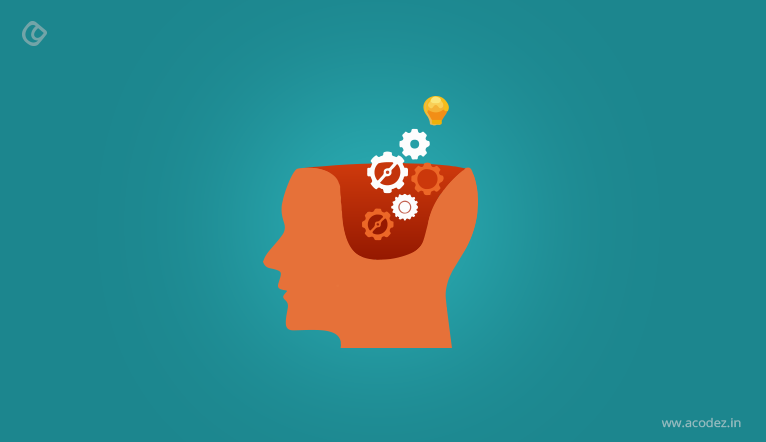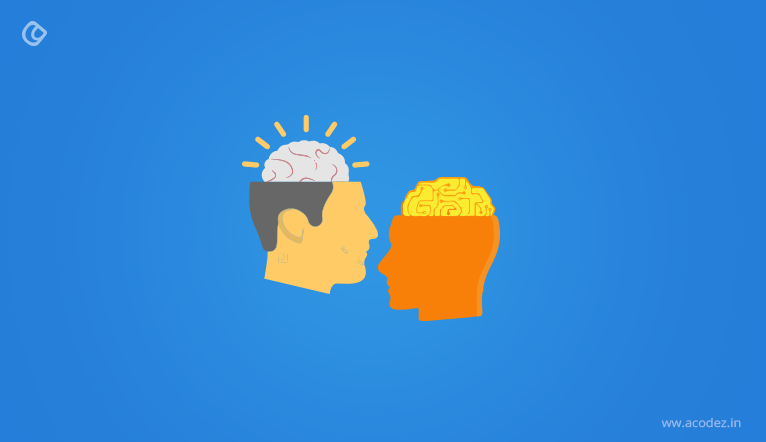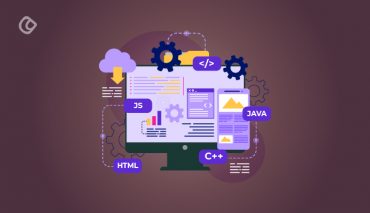Our technology designers are striving hard to ensure that we get the best experience out of every design that we come in contact with. Many technological aspects are being altered to ensure that the customer needs are satisfied. Though the machines are capable of satisfying human expectations, it has always missed out at creating an emotional bond with the users. Of course, there is a materialistic bond that develops, but the human touch seems to amiss when we proliferate deeper into the connection that we share with our devices.
This is when our technology experts decided to bring about humanization in the devices that we happen to use. The process is underway and this human-centered design (HCD) is built on human values that will be encapsulated into the service, product or artifact that we will be using. Now, the exciting part of HCD that we are going to explore here is how it will be utilized in machine learning. You might be wondering how machine learning services can actually benefit from HCD, but the truth is yes HCD will create a new era of revolution for building machine learning. Together, HCD embedded in the design and machine learning services will compile to exploring newer and unique opportunities, and also identify the risks that might be threatening to machine learning decisions in the long run.
Before we explore the power of HCD and machine learning combined, let us find out more about machine learning.
Machine Learning: An Overview
What is Machine Learning?

Machine learning can be simply defined as the technique or style through which a computer program is programmed or capable of writing newer programs without human interference or human directions. Machine learning can be divided into supervised and unsupervised domains. Unsupervised usually comprises of the algorithms used by high-end processes, such as the big data, and often the process involved is referred to as the regression analysis. Moreover, unsupervised machine learning functions by analyzing statistical information that helps in identifying the patterns underlying data that will help in formulating decisions based on this data.
Supervised machine learning also explores the statistical information. But, gains access to this statistical data through data that is designed by human beings. This machine learning replicates the data created by humans by analyzing and understanding the human-designed one.
Connecting HCD and Machine Learning

Now that we have explored machine learning, let us see how machine models will venture toward modeling itself into human cognition. But, if you are actually planning to build HCDs(Human-Centered Design) that are connected to machine learning, it is imperative that you understand the differences and similarities between human learning and machine learning. You need to be aware of the connection between machine learning (ML) process and the human brain to succeed in connecting these. Yes, both share a similar kind of design, which helps in the identification of statistical data patterns.
This is how our brains are designed to program – we get the ability to recognize, analyze and connect with the people and the otherworldly factors through the medium of pattern identification. How else do you think you can distinguish between a dog and a cat when you see one? A lot of complex pattern recognition mechanism is involved and our brain is constantly working on that.
This connection that is established from pattern recognition comes from the correlation coefficient existing between vision and conceptualization strategy, which helps our brain to fetch information and make a match with one of the existing 8,000 different data points that are embedded inside it. And, if it encounters something new, it needs to make a note of it, for future references. All this is driven from the moment light bounces over to the surface of our eyes drawing the shape, color, texture, geometry and other visual inferences, including weight, height and density, and others, which helps in forming a decision. Now the brain has sufficient information to design patterns, thus creating a conceptual model.
There is an unimaginably innumerable reservoir of conceptual models inside our brain that can be implemented to identify and interpret patterns as well as to form new ones.
The same kind of a process is programmed inside the machine learning that draws inspiration from the real human brain’s neuron structural design. The methods implemented by this process to analyze, recognize and reproduce a pattern is a similar variant of the one used by our brain to distinguish cats and dogs. The methodology utilized for this purpose may be different, including measurements of curvature, gap measurements and even rapid quantitative measurements across the edges. All these aim to help the process build a different conceptual model every time a pattern in unfolded through its visual sensors, which tends to differ from that of humans. You might not be able to decode the machine learning process that revolves around the pattern recognition. It’s okay you need not strain.
One fact that you need to keep in mind is that unlike humans, the machine’s capacity is bound to have limitations when it comes to drawing presumptions from patterns.
Now that the computer has sufficient capacity to draw inferences from patterns, how can we imbibe in the emotional bond as derived from human beings inside the computers?
Machine learning has a transactional value emphasis program that is unlocked whenever a pattern appears to match it against a set of existing patterns and the transactional value extends this further to unlock newly identified patterns. This is how machine learning is applied to the analysis of market trends, optimizing organizational operations and reduces risk in complex situations. But, there should be a program that helps the machine to identify why the aforementioned aspects matter.
This is where our HCD comes into the vicinity, which is a process that is programmed to help the machines to perform pattern analysis, while the key distinguishing factor is asserted inside of qualitative patterns. This is how the machine is able to connect with human beings by thinking over the lines – how a user is expected to feel in a given situation. A lot of patterns and distinctive variants of human behavior can be encapsulated inside the HCDs to explore machine learning. It needs to be trained to exhibit human behavior and this is where we embed a congregation of the training data inside the supervised machine learning.
The programmer pays attention to details while embedding in data that might be designed in the same pattern as that of human emotions. As well as the programmer can organize the different types of patterns that the machine is required to interpret and then collaborate all ideas for identifying risks and devising probable solutions.
A lot of newer data sets will be generated from the machine learning process, which can be considered as the output, which you can find as a proposal in its customized form or over the dashboard. This new data will have a different perspective of human experience which can be explored to design the machine learning process. This is where we encounter the connection between loop value and the human in the loop, in which the latter will assert accuracy to the algorithm that is used by the machine learning process to build its own pattern to identify the behavior. The machine learning will drive the data set points in a newer direction in the long run, with an intelligence to identify future patterns.
Human Perspective In HCD

Human beings possess their own level of intelligence in perceiving the world and this differs from individual to individual. Geographical variations exist as we move from one location to another – differences exist between words in languages and this could be invariably large as we move from one location to another. Machine learning is designed to generate different solutions for different people, i.e., no same solution that is used for one person will be offered to another. This is where we encounter the intelligence of sites such as Amazon, which brings up suggestions based on our previous selections.
A Few Things to Remember When Implementing HCD For the Machine Learning Process:
- You should not be expecting machine learning to actually understand what problems you want it to solve – after all, it is a machine with limitations.
- Before you set out design, try to figure out whether the machine learning is capable of resolving the problem you have. If it is not capable, then, why waste your time. You need to have a perfect program designed to resolve the problem. If it is something that can be resolved without machine learning, then why do you have to put in all that effort when a small and simple program can easily solve it.
- Prototyping is one of the challenges that are part of machine learning. So, try to fake it using personal examples or wizards. Don’t wait until the fully designed model is ready to start testing, but create personal examples before you actually set out to design the working model so that you have a better idea of what is actually needed.
- Identifying errors – As we have discussed your HCD(Human-Centered Design) is not a human, so it is bound to make mistakes. You need to identify and analyze the kind of errors it might make, and the effect of these on user experience to avoid complications.
- Implement the right labels while programming your algorithm. This algorithm is responsible for pattern identification and unless it is fed with the appropriate details, it will fail to do its job right.
Are you looking for intelligent solutions for your business process? We can help you develop one.
Acodez IT Solutions is a web design company in India offering all kinds of web & mobile solutions. We also have a full fledged in-house UX design agency wherein we define and design user experiences for many leading corporate companies in India. We are also a SEO agency based in India offering all kinds of SEO and inbound marketing solutions to our clients. For more details, you can visit our website or contact us.
Looking for a good team
for your next project?
Contact us and we'll give you a preliminary free consultation
on the web & mobile strategy that'd suit your needs best.









